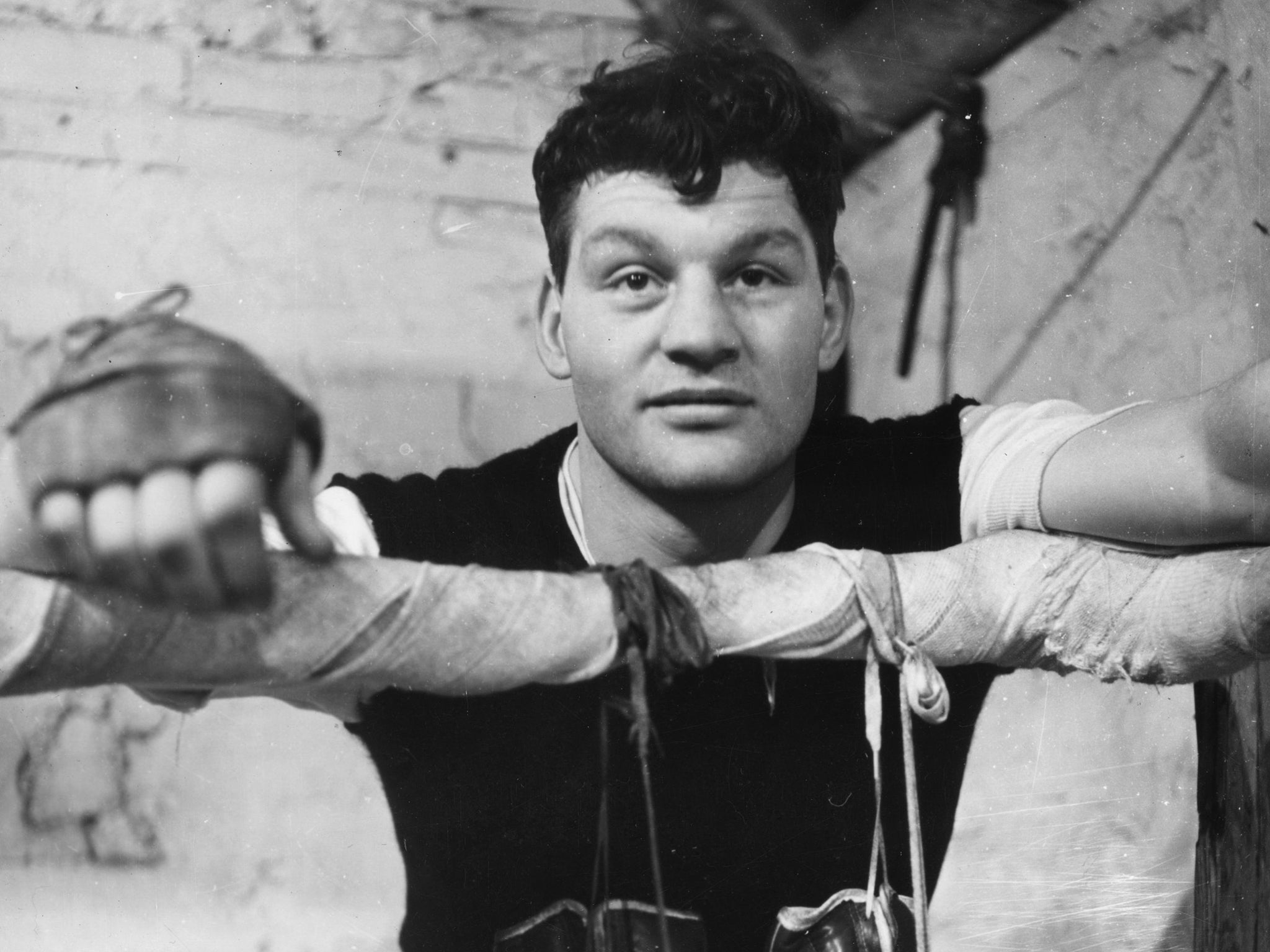Obituary: Bruce Woodcock

Bruce Woodcock, boxer: born Doncaster 18 January 1920; British and Empire heavyweight champion 1945-50; European heavyweight champion 1946-49; married 1947 Nora Speight (one son, one daughter); died Doncaster 21 December 1997.
Bruce Woodcock was one of Britain's sporting heroes in those heady, deprived, optimistic days immediately after the Second World War. He had a snappy left jab, a big, honest heart and plenty of charisma, and was the dominant European heavyweight of his generation.
When the world heavyweight champion Joe Louis retired, the great British sporting entrepreneur of the day Jack Solomons matched Woodcock with another American, Lee Savold, for the vacant championship at White City in June 1950. It was not recognised as a title fight far beyond Britain, but none of that worried the crowd of more than 50,000.
Woodcock's workouts attracted as many as 5,000 at a time. Sadly, his world championship claim evaporated because of a vile, snaking cut which ran the length of his left eyebrow. The fight was stopped in round four.
It is a lamentable reflection of the standards of the day that Woodcock was able to box Savold at all: he was virtually blind in his left eye, the result of an earlier drubbing at the hands of the Pennsylvan- ian former miner Joe Baksi, and yet passed all medical examinations,
Woodcock learned his boxing at impromptu bouts with boyhood friends in a local copse known as "Three Cornered Wood", and eventually at an amateur club. "Boxed with man in gym," wrote the 12-year-old future champion. "He made my nose bleed." And a little later: "Boxed with same man. He broke my two front teeth. But I know I can beat him now." That's the way he always was. Getting hurt was a part of the job. Winning was what mattered.
As an 18-year-old railwayman Woodcock boxed for England in the 1939 European Championships in Dublin, and won the ABA light- heavyweight title. By 1942, he was a professional.
For two years, up to the summer night in July 1945 when he became British and Empire heavyweight champion by knocking out Jack London, Woodcock trained in a tiny, home-made gym in an old stable at the back of The Plough pub in Doncaster.
There was no running water, and the tiny ring was jammed flush against the walls, which made sparring hazardous. Yet from these antiquated conditions Woodcock launched himself into world class. The gym, which legend has it was a hiding place for Dick Turpin in the 1730s, is still in use.
Woodcock beat London, whose son Brian would fight Muhammad Ali 20 years later, in the first of the splendid outdoor promotions staged by Solomons. This one was at White Hart Lane. Woodcock won in six rounds. Ever the homespun hero, he declined all invitations to celebration parties and drove straight back to Doncaster.
He was hurried too quickly into world class and lost to Tami Mauriello in the fabled Madison Square Garden, New York, when he hurt a knee, and yet a fortnight later outpointed Freddie Mills over 12 hard rounds at the Harringay Arena.
Two months later, Woodcock knocked out Albert Renet of France in six rounds to become European champion, and then in September 1946, he stopped Lesnevich in the eighth of a non-title fight before a sellout crowd at Harringay.
The year's earnings were enough to buy Bruce and his wife Nora their first house, plus another one for his parents away from the poor "Low Drop" area of Doncaster where they had lived for so long.
In his autobiography, Two Fists and a Fortune, published shortly after his career had finished in 1951, Woodcock remembered:
Bright lights, gay nights, champagne parties and pretty women are not for me. I know better than anyone how lucky I was to have the chance to earn the money that lifted us out of the drabness and frequent despair of the surroundings down in the Low Drop. Right from a kid I had to learn the value of every penny.
Woodcock's world came crashing down when he fought Joe Baksi in 1947. He was floored with the first punch, and today the flickering tape bears terrible witness to his immense bravery. Woodcock's punishment lasted 20 minutes, described by the contemporary Weekly Sporting Review as "seven of the most wicked and vicious rounds ever endured by any fighter, any time, anywhere".
He remembered the horror only too well. "My legs, arms, head, all seemed to be leaving me. I couldn't see properly. The whole vast arena seemed to be swimming round me in a crazy whirlpool of lights. I lost all sense of balance and distance, all count of time."
His jaw was broken, he had a detached retina in his left eye, yet in the autumn of 1948, he returned with a bloodless victory over the American Lee Oma and then in December won again when Lee Savold was disqualified for hitting him low.
After a successful Empire title defence in Johannesburg against Johnny Ralph, Woodcock and Freddie Mills drew 46,000 to White City for a rematch. Thousands crammed Great Windmill Street off Piccadilly simply to see the fighters arrive for the weigh-in. Woodcock won in 14 rounds.
The cut eye ruined his chances against Savold, but while the promoter Solomons attempted to talk up a rematch, Woodcock defended his British and Empire titles against the younger, untested Jack Gardner, and retired after the 11th round. Gardner's punches had closed his one good eye.
In retirement, he remained in the Doncaster area, and for many years kept a pub. He rarely talked publicly about boxing, but acknowledged that it had enabled him to put his son through college and provide his daughter with a convent education. That probably meant more to him than any of his victories.
Join our commenting forum
Join thought-provoking conversations, follow other Independent readers and see their replies
Comments
Bookmark popover
Removed from bookmarks